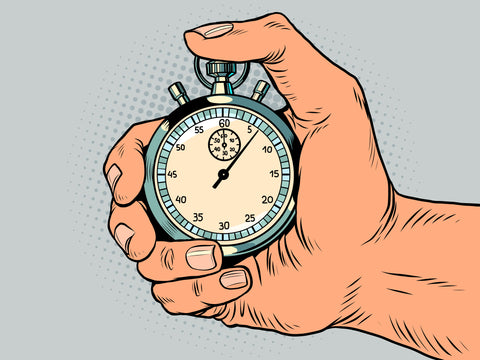From the sundials and water clocks of the ancient Egyptians to the mechanical contraptions of the Renaissance, the history of timekeeping has been synonymous with the history of human civilization. The evolution of the stopwatch is a microcosm of this larger narrative, encapsulating the innovations and insights that have propelled us forward.
In the early days, timekeeping was a luxury, often confined to the elites and the scholars. The accuracy was rudimentary, and the devices were more a curiosity than a functional tool. However, as the industrial age dawned, the need for precise time measurement became paramount. The stopwatch, as we recognize it today, began to take shape, transforming from a mere novelty into a vital instrument for various professional fields.
During the 19th century, the rise of railroads and the standardization of time zones underscored the importance of precision in timekeeping. The stopwatch played a key role in these developments, allowing for synchronization and coordination that was previously unattainable. Simultaneously, in the world of sports, the stopwatch became an emblem of fairness and competition, ensuring that every second was accounted for, and every record was verifiable.
The 20th century brought about the digital revolution, and the stopwatch was not left behind. The integration of electronic components allowed for an unprecedented level of accuracy, bringing timekeeping to the realms of nanoseconds and beyond. Today, digital stopwatches are employed in everything from Olympic races to quantum physics experiments, their ubiquity a symbol of our relentless pursuit of exactitude.
Yet, the journey of the stopwatch is far from over. As we delve deeper into the mysteries of time itself, from relativistic effects to quantum mechanics, the stopwatch will likely continue to evolve, adapting to new paradigms and challenges. It might even transcend its physical form, becoming an integral part of virtual and augmented realities, or finding applications in space exploration and other frontiers we have yet to conceive.
Moreover, the societal implications of the stopwatch extend beyond its technical applications. It represents our relationship with time, our drive to quantify and control, and our inherent desire to understand the world around us. The stopwatch is not just a tool; it's a symbol of human ingenuity and an emblem of our time-bound existence.
In conclusion, the history of the stopwatch is a tale of innovation, adaptation, and aspiration. It has been a witness to human progress, participating actively in the evolution of science, industry, sports, and even philosophy. Its future promises to be just as vibrant and transformative, embodying our ceaseless endeavor to master time, space, and the very fabric of reality. The stopwatch, therefore, stands not only as a testament to our past achievements but as a beacon, guiding us towards new horizons and unknown territories.
Share


